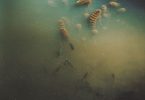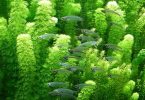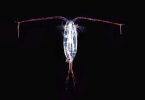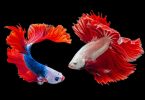Table of Contents
Coldwater fishes are amazing fishes because of the colour and the calmness they bring to the fish tank. More than anything, they are very easy to be cared for, and when well cared for, they live healthy.
Here are few tips on how to care for the cold-water species of fish our finned friends.
Cold water fishes, what are they?
Cold water species of fish especially in aquariums are fishes that do not need a regulated temperature nor a heater in the normal aquarium indoors.
So as the name implies, this species of fishes grow well in cold water temperatures.
In fact, many cold-water fish are unable to dwell in water that is warm or temperate, the type in which tropical species of fishes are kept in. Hence, a lot of species of the cold water fish are best kept alone.
Why keep a Coldwater fish tank?
Well, the Coldwater fish tank is cost effective. This is so because the tanks are quite affordable to get and maintain, because one will not worry about getting heaters, using electricity, the temperatures or anything of such. More so, the species of algae usually are not able to rapidly grow in cold water.
How to care and maintain the cold water fish
The Coldwater fish is amazing and really does not require much care, they can be indoors or outdoors ponds as the case may be.
But whether the aquarium is indoors or outdoors, the tank will have to meet a few requirements like the following:
- Temperature: Between fifteen degrees celsiuse and twenty degrees celsius
- PH: Between six point eight and seven point eight
- Nitrite: Below zero point five ppm
- Nitrate: Less than forty ppm, and zero is still ideal.
This is dependent on the kind of fish one cares for, as the levels could vary.
Setting up a cold water tank
The Coldwater species of fish need to be in a tank that is wide, so that they can survive well, more so the size of your tank will depend on the number of fish one would like to have.
Once the tank is in place, endeavor to keep it away from the exposure of sun and heat, and place the substrate within it. The gravel should be added to beautify and very easy way to clean it.
Before welcoming the species of Coldwater fishes to their tank, cycle the tank for about one week, make sure the temperature is cold enough and clean enough for even the new bacteria to form, also add a thermometer and water filter that will keep the quality of water.
Feeding
Feed your fish pellets or flakes, it is best to feed them daily.
Cleaning
Always endeavor to recycle water in the aquarium to maintain the health of the tank. To do this, eliminate about twenty-five percent water within a given period, the temperature cool and free from any chemical at all.
Again, it is advisable to invest some money and time in an algae scraper. Should there be an algae in the pond, do well to remove plants that seem to be overgrown.
You can also add something new to your pond – snails. Snails are the most preferred method, as they have great ability to remove the green algae.
Types of fish compatibility
If fishes are in incompatible habitats, they can be prone to diseases, injury, and stress. Carry out some research in order for you to gain an understanding of the species that will live peacefully with each other.
Fishes that are compatible indoors:
- Betta fish
- Gold fish
- Bloodfin tetras
- Danios
Fishes that are compatible outdoors include:
- Koi fish
- Snails fish
- Gold fish
How to take care of their health:
When looking to get a new fish, endeavor to get fishes that are free from disease or injury. This is because when fishes are unhealthy, it becomes very difficult for them to adapt in the new space, and the expectancy rate is affected too.
Also observe your fish at least once a day to be sure that the fishes are in very good conditions, and they thrive in their tank.
The coldwater fishes usually get infected with internal parasites and fungal infections.
Look out for changes in the physical appearance of your fish, like changes in the eyes, colour, any spot, and even swelling eyes means that the fish is definitely infected and, if left untreated, can infect the rest of the tank.
Yes, for beginners, it is necessary to begin with species of coldwater fishes. These fishes include:
1. Paradise fish
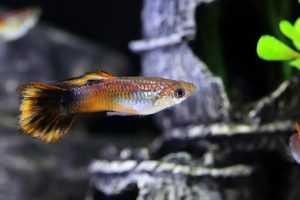
This species of fishes belongs to gourami, and is about four inches long. The males have fins that are flowing and are bright, with the vibrant colours around their bodies.
This fish is quite delicate and can be aggressive so aquarists must be careful in choosing their tank mates.
The species can also be given a space of at least thirty liters within which they can swim around comfortably, and the temperature should be between sixty degrees and eighty-five degrees which is ideal for water that is cold.
They are quite friendly and do well in communities in the aquatic environments where they live with the right tank partners.
2. Panda Corydoras
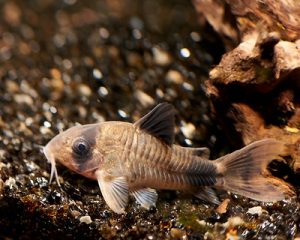
“Corydoras panda.” by d50harry123 is licensed under CC BY 2.0
There are many varieties of the Corydoras, and most of these varieties are cold water fishes. However, the corydoras unlike most species of cold water fishes is tolerant of of temperatures that are low, and survive within sixty-five to eighty degrees centigrade.
Hence aquarists put them in a tank with the gold fish since it usually reaches 2-3 inches, which many consider too large to be eaten by the goldfish.
However, corydoras has a number of spines and spikes round their bodies that stucks a fish in its throat and often leads to the death of both the goldfish and the coryfish.
Corydoras are community fishes and as fishes that are schooling, they are very helpful in expressing their personality.
3. Goldfish

Fancy goldfish are a popular species of gold fish that often have more beautiful colours than other common variations. They share many features like other goldfish.
These fish are ideal for cold water aquariums because their natural temperature requirements are quite low (this can be below 50 ° F).
Most of the time they don’t even need heaters! The fancy goldfish will go with many other species and does not require much effort to keep them healthy.
4. Bristlenose Pleco

“Bristlenose pleco” by bored-now is licensed under CC BY-NC-ND 2.0
This species are about three to five inches in size, they also are well known algae-eaters, and having them in the tank can be more time consuming and taskful than have other algae feeders like the nerite snail.
This species of the plecostmous cat fish are well known for their primitive appearance and personality, and it is amazing to have them.
5. Celestial Pearl Danio

“Celestial Pearl Danios” by CheepShot is licensed under CC BY 2.0
Celestial Pearl Danio is an excellent breed that appeals to many aquarists. Their fun pattern and colors make them a great choice for anyone who wants to bring color to their tank.
These species are also a good choice if you prefer low-maintenance fish. While there are some other elements of care you will need to get used to, it is not very difficult to keep them.
These fish are the best in well-planted aquariums, the green plants make their colors stand out! We recommend this type to other aquarists at all times.
- Size: 1 inch
- Difficulty: Medium
- Small Tank Size: 10 liters
- Water Temperature: 73 ° F to 79 ° F
6. Pygmy Sunfish
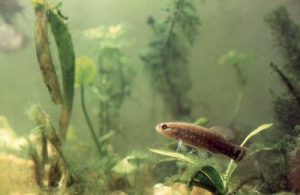
“Pygmy Sunfish in Aquarium (1975)” by Hunter-Desportes is licensed under CC BY 2.0
Pygmy Sunfish is an excellent species that is one of the best freshwater fish. The funny thing is that most people don’t know about this fish.
Of all the fish on the list, the Pygmy Sunfish is at the top, in terms of its ability to handle low water temperatures.
At a temperature of 45 ° F, it is difficult to find another similar species. They are not too hard to care for and are rather active fish.
We strongly recommend that you take some time to do some research on these types before you decide to buy. Although they may not be extremely difficult, there are a few areas of care that you will need to get used to.
- Size: 1.25 inches
- Difficulty: Medium
- Small Tank Size: 5-10 liters
- Water Temperature: 45 ° F to 80 ° F
7. Axolotl

The species of guppy are usually easy to be cared for and they grow to about two point four inches. They also survive in a tank of five liters that has a minimum of five gallons of water, and tolerates a PH level of five point five to eight point five.
The females also have stripes that are gray in colour and half of the back has a bright colour. The tanks can be decorated using substrates, rocks, and even live plants. They can be fed blood worm and shrimp.
8. Guppy (Poecilia reticulata)
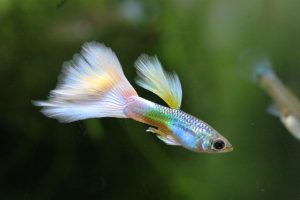
The species of guppy are usually easy to be cared for and they grow to about two point four inches. They also survive in a tank of five liters that has a minimum of five gallons of water, and tolerates a PH level of five point five to eight point five.
The females also have stripes that are gray in colour and half of the back has a bright colour. The tanks can be decorated using substrates, rocks, and even live plants. They can be fed blood worm and shrimp.
9. White Cloud Mountain Minnow
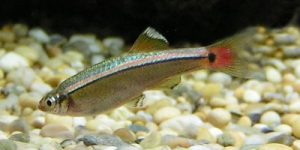
“White Cloud Mountain Minnow” by mira d’oubliette is licensed under CC BY-NC-ND 2.0
They are often sold as feeder fish in pet stores, but they make large pets due to their durability of survival at almost any tank size and temperature (as long as it is not too hot).
It is sometimes known as “the poor the neon tetras” because of its inexpensive value, these days they come in many forms, such as albino, gold, and long stripes.
10. Bloodfin Tetra

“Bloodfin Tetras” by jilldoo is licensed under CC BY-NC 2.0
Native to Southern Brazil and Paraguay, both the common bloodfin (Aphyocharax anisitsi), and the fake bloodfin (Aphyocharax dentatus) tolerate low temperatures as low till the mid-60s. Omnivores are peaceful, easy to care for and very strong. Thus, bloodfins are offered in many pet stores. These tetras are best kept in schools and they are active surface dwellers.
11. Hillstream Loach
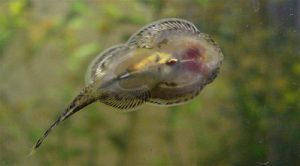
These impressive bottom dwelling fish come from South and East Asia. Although these fish are rarely seen in pet stores.
Although, not all of them likes the cool temperatures, but most will tolerate temperatures that fall in the mid 60's high Fahrenheit.
12. Barb (Barbus tetrazona)
The fish is native to Borneo, Indonesia and Sumatra. It is an active and healthy species of fish that can live up to 6 years.
They thrive in a 20-gallon aquarium and live in the middle of the tank water. The Barb species are omnivorous in nature and feed on brine shrimp and even bloodworm.
13. Zebra Danio (Danio rerio)
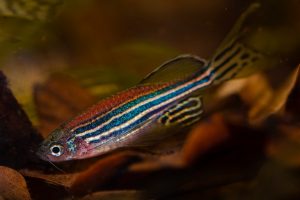
Zebra Danios is one of the most exciting freshwater species in the world, and it is peaceful. They are omnivorous, they are present with the temperature of sixty-five to seventy-five degrees Fahrenheit, and a PH level of within six point five to eight.
They are mostly found within the Ganges of East India. More so, the Zebra Danio fish loves to run round caves, holes, and the tank in exploration of the caves.
Zebra Danios has a very high population, they prefer to live within the shoals of about six or even eight and they grow up to five centimeters in size.
When it comes to mating, these fish are mainly focused on breeding pairs. The female will lay 20-80 eggs or more.
They are also quite affordable and easy to maintain and the females scatter their eggs beneath the tank, so they should be separated from adults.
14. Dojo Loach

“Golden Dojo Loach” by Rhizae is licensed under CC BY 2.0
Want something bigger? This dog-sized fish can grow up to 10 to 12 inches in length and should not be kept with smaller species, such as pearl danio or cherry shrimp.
Instead, try variatus platy, barbs, and other medium-sized fish that do not look like food. They are fairly cheap for their size and make a great addition to any large aquatic aquarium.
15. Clown Killifish
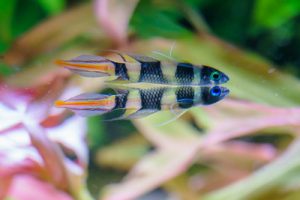
This kilifish (Epiplatys annulatus) is another coldwater fish that can be kept in a community tank and other small species.
They have blue eyes, their bodies are marked with broad vertical bands, and the males have a rock-like tail (hence their nickname "rocket killifish").
Like most killifish, they tend to swim on top of the tank, so make sure your aquarium has a hard cover that prevents them from getting out.
Clown killifish prefers a pH of 6.5 to 7.8 with moderate water hardness, and will easily lay eggs in floating plants.
16. Endlers livebearer

Poecilia wingei resembles a small version of its famous cousin, the guppy, in that it too is designed to display many unique colors and fin shapes.
However, if you find the original livebearer, of the wild type Endler, it is very durable and can stay at room temperature with a wide pH ranging from 6.5 to 8.5.
Also, they are very peaceful and get along well with most ofthe fish on this list.
To fill them, just set up a tank with about two males and four females. Fill the aquarium with live plants and lots of hiding places and you will soon have a living factory, exploding when you have fish babies.
17. Weather loach (Misgurnus anguillicaudatus)

This species are quite big and they have the ability to predict storms, and equally react to the changes of the climate.
Being quiet and strong, these fish are ready to be kept in an aquarium. The temperature should range between fifty-five degrees Fahrenheit and seventy-seven degrees Fahrenheit.
They usually grow to about twelve inches and are in the habit of digging for water plants.
The color of the fish varies from yellow, orange to pink. These fish have a long body with stripes from its head to its tail.
18. Rainbow shiner
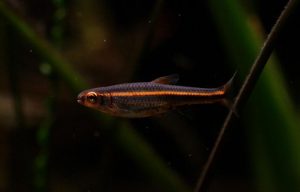
“Rainbow Shiner(Notropis chrosomus)_0088_1” by scott361 is licensed under CC BY-ND 2.0
The rainbow shiner (or Notropis chrosomus) is definitely used in cool water and is known for its brilliant purple and pink hues, especially during mating season.
These torpedo-like fish grow to 3 to 3.5 inches in length and can be kept with other peaceful fish that enjoy the same water parameters. Rainbow shiners are schooling fish, you should keep them in school for six or more.
19. Sunset Variatus Platy
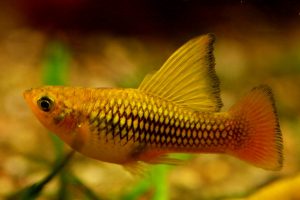
We have a special place in our hearts for the livebearers (or fish that breed early) because of how easily they make baby fish, but over the years, sunset variatus platy (Xiphophorus variatus) has become our favorite. Includes everything you would like for a perfect fish:
- Available in a wide variety of colors and patterns
- It is very durable and inexpensive
- Only two to three inches long
- It is alive but compatible with other fish and plants
- It is easy to breed for fun
They can live in a wide range of temperatures and they often choose pH levels above 7.0. Include live plants and other fish in this list, and you are sure to love them!
20. Cherry shrimp (Neocaridina davidi)
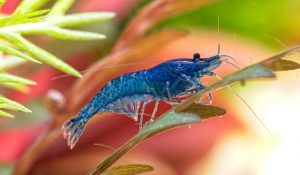
This species are small varieties of shrimps, and mostly valued for the red colour that it has. It is also very easy to be cared for.
The temperature is best kept at fifty-seven degrees to eighty-six degrees Fahrenheit.
The species of cherry shrimp are mostly in the groups of about five or even more. They have a gentle nature and a strong sense of humor.


